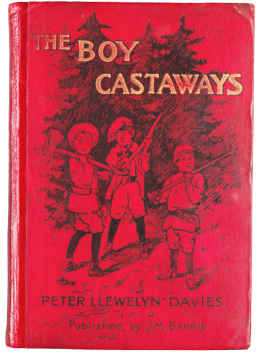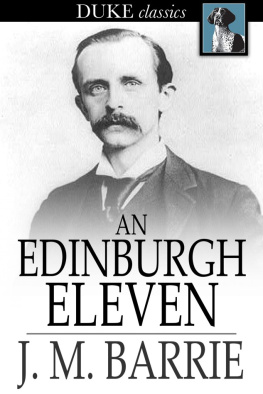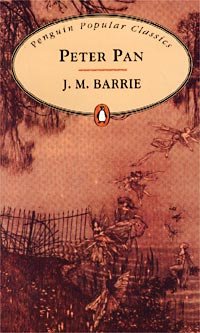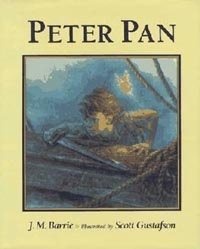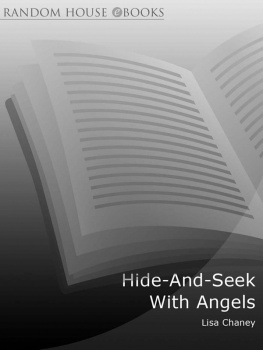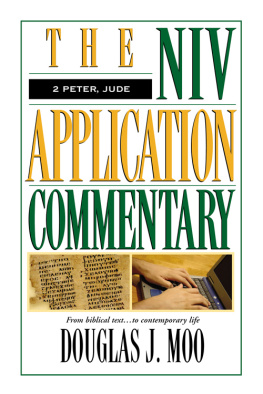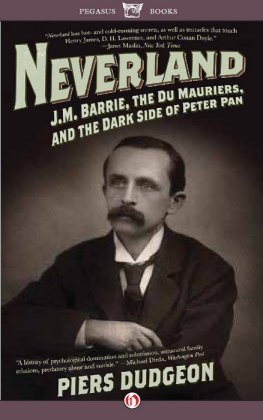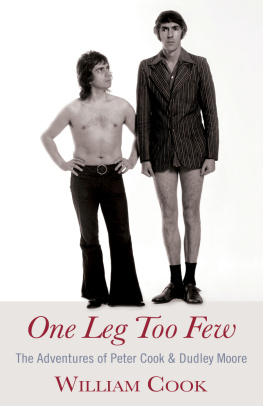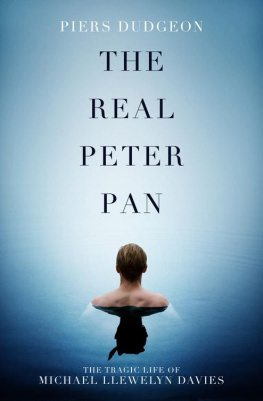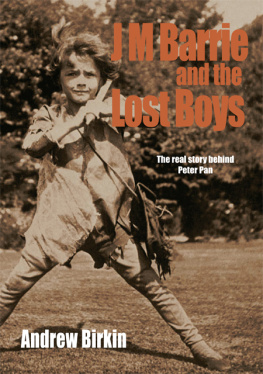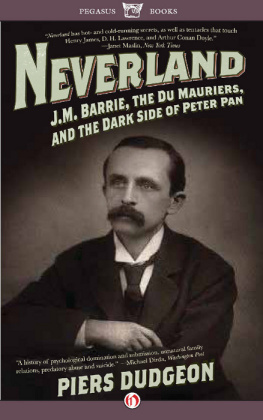


To the Five:
For Lauren and Daniel,
as always,
and for the boys in the next generation,
Ben, Sam, and Grant
Contents
A ll children, except one, grow up, J. M. Barrie tells us, in the famous first sentence of his novel Peter and Wendy, published seven years after Peter Pans theatrical debut in London. That one rebellious child exists in many different versions today. There is Walt Disneys redheaded Peter Pan, animated in both senses of the term. There are the many nimble women of BroadwayMary Martin, Sandy Duncan, and Cathy Rigbywho have soared across the stage as Peter Pan. There is the enchanting Peter Pan who magically appears at the home of the Llewelyn Davies boys, when their mother is ill, in Marc Forsters Finding Neverland . We encounter the boy who would not grow up on stage and screen, and also in fiction, with countless prequels, sequels, adaptations, and revisions. Peter Pan may refuse to grow up, but he also will not die.
When I rediscovered Peter Pan as an adult, I quickly learned that he existed in multiple textual forms even before he detached himself, to lead a life of his own, from the Scottish writer who dreamt him up. He was first brought to life in Barries 1902 novel The Little White Bird , a whimsical and elusive work (Barrie hated both those adjectives, in part because they captured his style so perfectly) about a bachelor who develops an attachment to a six-year-old boy named David. Embedded in that novel is the story of a seven-day-old Peter Pan and his adventures in Kensington Gardens (All perambulators lead to the Kensington Gardens). The chapters about Peter Pan were published separately in 1906, with only a few minor changes, under the title Peter Pan in Kensington Gardens . The volume was illustrated by the artist Arthur Rackham, perhaps the most acclaimed childrens book illustrator of his day, best known today for images he created for fairy tales by the Brothers Grimm and by Hans Christian Andersen and for works ranging from Aesops Fables to Kenneth Grahames The Wind in the Willows .
Today, we know Peter Pan best in his role as lead of the 1904 play Peter Pan, or The Boy Who Wouldnt Grow Up . The play did not appear in print until 1928, but in 1911 Barrie published the novel Peter and Wendy , which became known as Peter Pan . To recapitulate, we have:
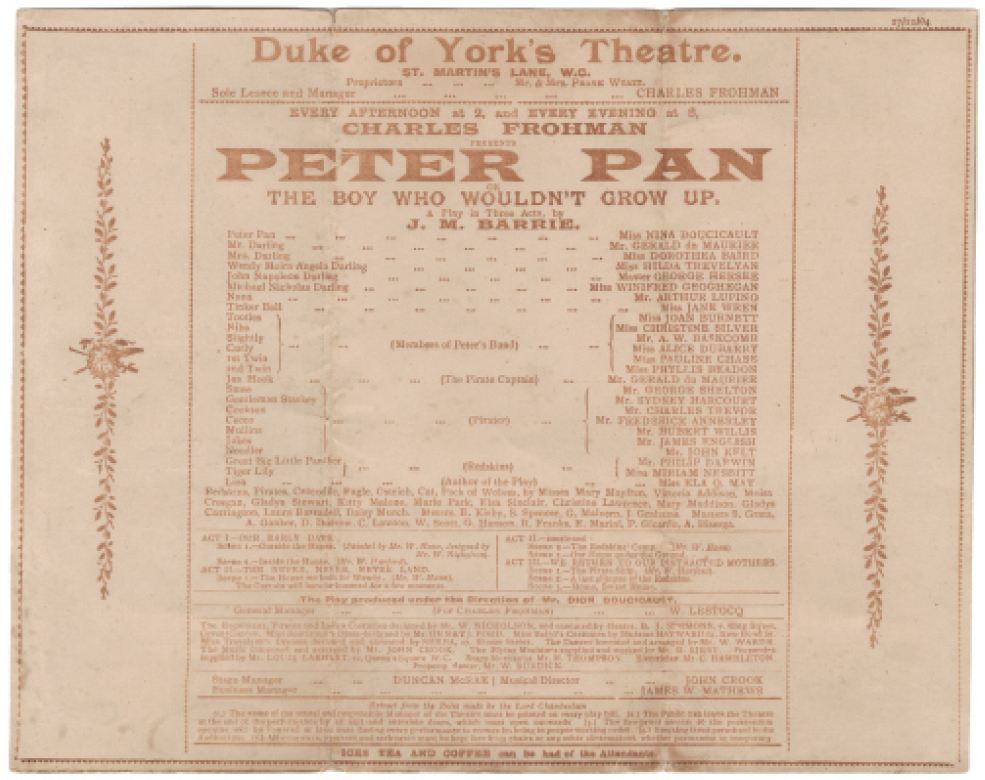
Program for the London production of Peter Pan. (Beinecke Rare Book and Manuscript Library, Yale University)
The Little White Bird , 1902
Peter Pan, or The Boy Who Wouldnt Grow Up (stage premiere) 1904
Peter Pan in Kensington Gardens , illustrated by Arthur Rackham, 1906
Peter and Wendy , 1911 (later renamed Peter Pan )
Peter Pan, or, The Boy Who Would Not Grow Up , published in 1928
The play, which existed only in performance for many years, underwent multiple revisions. Barrie attended rehearsals and was constantly cutting, revising, and adding new material, collaborating with the actors and actresses to improve dialogue and staging. Many of the early scripts are preserved in the J. M. Barrie archive at the Beinecke Rare Book and Manuscript Library in New Haven, Connecticut, where the bulk of Barries papers are stored. To give one example: on onion-skin sheets in a small folder marked 1904/05, the third act of what was then a three-act play showed Wendy agreeing to become Peters mother and to live with him in Kensington Gardens. The two discover a baby under some rubbish in the park, and a delighted Wendy, who realizes that Peter will need someone to take care of him once she grows up, takes the child in. The curtain falls on Peter, Wendy, and child as they wave from their perch in Kensington Gardens. Who knew that there were also performances in which anywhere from a dozen to twenty beautiful mothers compete with one another to adopt one of the lost boys? Or that Hook survived the crocodile attack on the high seas in an early version of the play but accidentally lowered himself into its gaping jaw while climbing down a tree in Kensington Gardens?
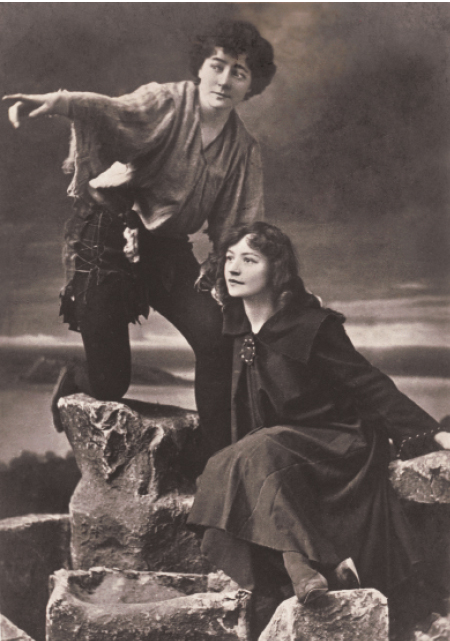
Postcard of Cecilia Loftus and Hilda Trevelyan in Peter Pan. (Beinecke Rare Book and Manuscript Library, Yale University)
The conventional story of a Peter Pan who enters the nursery of the Darling family, abducts the children by teaching them how to fly, and escorts them with Tinker Bell to Neverland is far less stable than most of us realize. To be sure, in all versions the children and the lost boys on the island still come into conflict with pirates and redskins, and Peter must always battle the wicked Captain Hook. But the return home is imagined in a variety of ways, and we do not always have a grown-up Wendy at the end of the play, with a daughter who will fly off to Neverland to help Peter with his spring cleaning. For Barrie, Peter Pan existed in performance, and the various typescripts reveal exactly how much he loved to see the character come alive onstage and transform and renew himself with each new production.

A scene from the first production of Peter Pan , showing the beautiful mothers and the boys they are hoping to adopt. (Courtesy of Great Ormond Street Hospital Childrens Charity)
Barrie at first refused to fix his iconic character in print. Mr. Barrie has often been asked to write a short narrative or libretto of his immortal childs play and of young theatergoers, who wanted a print version of the story. It was followed in the same year by The Peter Pan Picture Book , also by OConnor, with illustrations by Alice B. Woodward. Oliver Herford published a charming Peter Pan Alphabet in 1909, and G. D. Drennan fleshed out the story with his Peter Pan: His Book, His Pictures, His Career, His Friends .

G. D. Drennan capitalized on the growing popularity of Peter Pan with a 1909 volume that promised to elaborate on what was in the play. (Beinecke Rare Book and Manuscript Library, Yale University)
Barrie finally gave in to requests for an official story, with a narrative entitled Peter and Wendy , published in 1911 and illustrated by F. D. Bedford (a gallery of those illustrations is included in this volume). Like Peter Pan himself, that novel is betwixt and between, forever shifting its orientation from children to adults and then back again. Readers today will not be surprised to learn that it was constantly reshaped, adapted, and rewritten in Barries own day, although mainly by writers authorized by Barrie to recast the story for little people or for boys and girls. Still that version of the story is one that captures, crystallizes, and broadens what Barrie wanted to say with the figure of Peter Pan, and for that reason, I use it as the text for this annotated volume. Since it came to be published under the title Peter Pan , I have kept that appellation in the title for this volume, although I will differentiate (when necessary) between play and novel by referring to one as Peter Pan and the other as Peter and Wendy . Nearly all my annotations are relevant to the play as well, which exists in many print versions. Peter Hollindale offers an excellent introduction to the stage version in his J. M. Barrie: Peter Pan and Other Plays .
Next page
